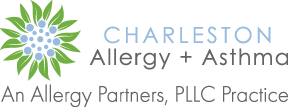Can your house ever be too clean? You might have told yourself no as you scrub the dirt from the floor or try to sweep up every last dog hair, but the answer might actually be yes, especially if you have young children.
Rates of asthma and allergies have been steadily climbing in developed countries over the past few decades. There are many theories regarding the rise of asthma and allergic disease, but perhaps one of the most prominent is the ‘hygiene hypothesis.’ Before you cringe at the idea of not washing your hands or showering, let’s discuss the concept of the hygiene hypothesis. It doesn’t relate to personal cleanliness (like hand washing and showering) and studies have actually shown those habits do not play a role in the development of asthma and allergies. Instead, the hygiene hypothesis relates to germ exposure in our environment and how a growing lack of exposure to germs might just be contributing to the development of asthma and allergies in children.
Many researchers believe that living conditions in developed countries have possibly become ‘too clean’ over the past century. With cleaner living conditions, the developing immune system of an infant is seeing fewer germs, and while this might sound better, the exposure to germs helps to train the immune system. After a baby is born, their immune system must learn to recognize the good bugs and the bad bugs. More exposure to certain germs during the first year of development will help tell the immune system “Hey, you don’t need to worry and react when you see me.”
The collection of ‘germs’ (microorganisms) in a certain area of the body is frequently referred to as the microbiome. The microbiome of the gut undergoes significant development during the first year of life and studies have shown that infants with older siblings have a more diverse gut microbiome with higher levels of ‘good’ bacteria. In addition, infants who are born via vaginal delivery versus cesarean section show greater diversity in their gut microbiome. Both children with older siblings and those born via vaginal delivery have lower rates of asthma and allergies compared to their counterparts.
Some of the most convincing research surrounding the hygiene hypothesis comes from studying children who grow up on farms. Children raised on farms have earlier and persistent exposure to a large variety of microbes and bacterial products, and demonstrate lower rates of asthma and allergic sensitization. There have also been multiple studies showing lower rates of asthma and allergies in children who grow up with dogs in the home. These studies have revealed it is not the dog itself, per se, but the higher levels of bacterial products found in the dust in homes with dogs that acts as a protective mechanism.
So next time you are deciding between cleaning the floors or heading outside to play in the dirt with your kids, grab the dog and get outside!




